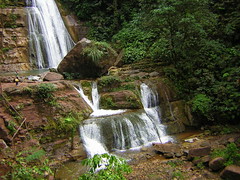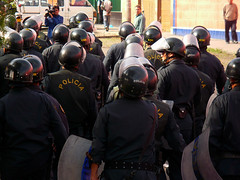Peru’s Amazonian Indigenous
In Peru’s vast Amazon region there are 65 ethnic groups with their own distinct traditions and languages passed down orally from generation to generation. What does the future hold for these peoples?
At the end of the 19th century and the beginning of the 20th, rubber tappers swept through the Amazon in search of the trees that would make them rich. This was the same Amazon that centuries before proved too inhospitable for even the Incas to dominate. But here, living in the forest at this point in history, were 80 indigenous groups that choose not to try to dominate the land, but to live in harmony with it. Each of these peoples, completely distinct with different languages, traditions and myths all had the same idea. Although the Incas, and those Andean civilisations that came before them, didn’t venture into the forest, they did trade with the people there and items from the jungle are found in burials on Peru’s Pacific coast.
Everything changed when the rubber tappers came. They introduced savage violence, exploitation and servitude – the plight of the indigenous was ignored by the Peruvian state they were told they were part of.
Fear and flight
Whole groups were forced to abandon their ancient territories, fleeing violence and slavery. Fugitives on their own land, they retreated into the remotest areas of the jungle and eventually became nomads – giving up fledgling villages and a settled lifestyle. Without contact with others, they became more vulnerable to diseases. It is estimated by anthropologists that about 14 different groups are still wandering through the Amazon, the combined population is probably between 5,000 and 10,000 people. Although no longer fleeing rubber tappers, they rightly fear all outsiders.
Groups in voluntary isolation however only make up a small fraction of the total native population. The bulk are organised into communities according to their language group. In the 1993 census, 300,000 natives in 65 indigenous groups were recorded in 1,450 communities. In the 20th century some 18 ethnic groups were wiped out by either the rubber tappers, the diseases they brought or were forced into and assimilated by large cities.
Community Initiatives
In the 1950s the Peruvian Government began a series of initiatives to help the indigenous communities. They were encouraged to settle in the areas they were now located so that they could have healthcare and schooling provided for them. Following this, today each community has at least one primary school and a health centre run by the Ministry of Health. But, without doubt, the most significant help came in 1974 when the lands they occupied were protected by law. They could now never be taken away – at least in theory. These protections were particularly useful when peasants from the mountains began arriving in the Amazon in the 1970s in search of better farm land. The majority were swiftly moved on.
Although as many as 50,000 natives died during the Rubber Boom, their populations are now doubling every 20 years. According to the Centro Amazónico de Antropología y Aplicación Práctica (Amazonian Centre of Anthropology and Practical Application), this increase is partly due to improved health care, though this doesn’t explain it entirely. Most diseases are recorded as being stomach or respiratory infections, diseases brought in by outsiders and now there are new reports of HIV infection. 76% of the medical posts have no way of reaching communities in their jurisdiction and the sick have to come to them. Quality of care is also limited by high staff turnover.
As development takes hold, so too do the problems of our developed society. Alcoholism in particular is a growing problem. Father Jaime Reagan, Catholic priest and anthropologist, thinks that far from taking a paternalistic attitude in dealing with these growing issues the key is instead education. Development and integration into our society, he explains, should be gradual and at a pace the communities decide.
Education means nothing though if there is no control over Amazonian territory. As with the rubber tappers in the past, communities today face the ever-increasing threat from illegal logging, mining and drug trafficking. This problem is particularly huge for the Sampantuari Asháninka community of the River Apurímac and River Ene Valley who are under constant threat from cocaine producers.
With 72% of the Amazon now carved up for gas and oil exploration, the old protections long since repealed, and new ones being proposed by greedy outsiders looking to get rich off the remaining 28% in the name of progress, the communities are facing an ever-growing threat.
Future
Anthropologists do not agree on what might be the future of these Amazon groups. Will they successfully isolate themselves, join our system or just be consumed by it? There is a growing protectionist trend that aims to ensure their current lifestyles are protected, and this competes with plans to integrate them and provide better healthcare and education.
Reagan explains that development doesn’t necessarily mean loss of culture and that ethnicity goes beyond the use of a particularly dress or an outward appearance. He cites the case of the Cocoma, a people who now mainly live in cities. The no longer have external forms of expression, but they have their own world view and pass on their knowledge within their community. He is also not convinced that a global homogenisation of cultures where the small are gobbled up by the big will take place. He explains that today there is a growing interest within these groups, globally, in preserving their cultures and keeping their languages alive using modern tools like the internet.
Although the future does not look bright for the Amazon, at least something of it might remain.

Tags: 1800s, 1900s, amazon, ashaninka, cocoma, indigenous, oil, rainforest, rubber boom, slavery










